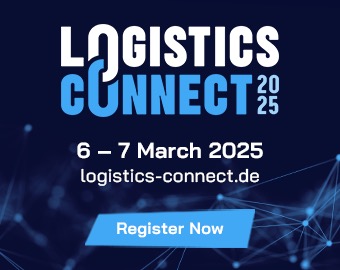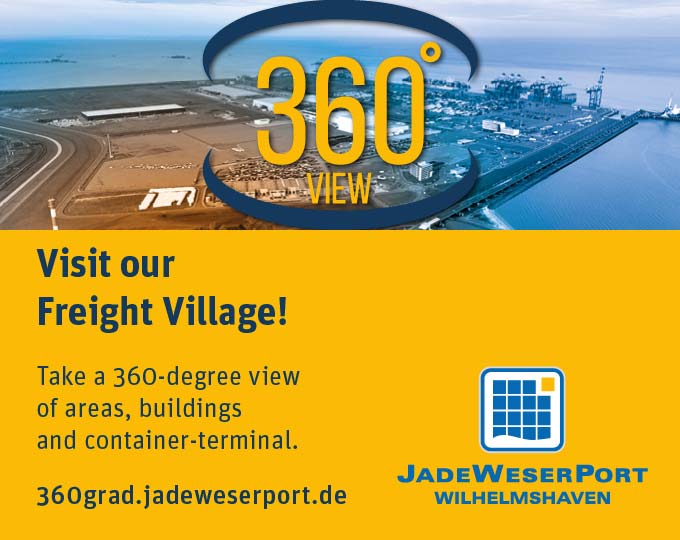OHB Digital Services, a Bremen-based company, has developed a digital twin which, thanks to satellite data, works best precisely where it is most difficult for other software – in large outdoor spaces – and offers a high degree of flexibility without permanent markings or manual registration of goods and location.
Credits: OHB Digital Services GmbH
five years ago.
“Satellites provide extensive metadata – however, these are not yet ready for use by non-professionals and companies,” explained Christian Stelljes, Manager of Innovations & Sales at OHB Digital Services. “Years ago, we started thinking about how we could make these data usable for companies as application solutions.” Some companies have been active in this field for longer. But with the bundling of this expertise, the OHB Digital Services division was founded specifically for interpretation and data processing and to develop and market products associated with the transmission and use of satellite data.
“The key field of logistics proved to be especially suitable because it functions on the basis of logic,” explained Stelljes. The idea: “We combine logistics and processes with our expertise in satellite precision.” The result was several products, including the LogTwin software application, which can be used to produce a digital image of all the logistical spaces, goods movements, processes and means of transport.
The BHV digitalisation working group
With its spokesperson Christian Stelljes at the helm, the digitalisation working group gets together once a month at Bremische Hafen- und Logistikvertretung (BHV). The working group has bundled the digital expertise of users and suppliers within the association since 2021. One of the group’s first areas of focus was developing an expertise directory, which has been available online at https://kompetenzatlas.bhv-bremen.de since early 2023 and offers an overview of members’ ongoing and completed software and research projects – with the aim of increasing interaction in the field of digitalisation. During an advisory hour from 10 to 11 a.m. on the second Wednesday of every month, working group members also provide advice on digitalisation issues in an effort to assist with the digital transformation in company processes and help overcome challenges. (cb)
How does it work? Two aerials mounted on transport vehicles or machines are used to receive and send global navigation satellite system (GNSS) data. One is for positioning, the other for orientation. With the aid of a proximity and an altitude sensor, all six dimensions of goods movement can be identified and tracked. To calculate a position on the earth’s surface, these GNSS receivers measure the length of time it takes the radio signal to travel between the satellite and the receiver. Combined with a reference antenna at the site of operation and a mathematical calculation, this provides the precise position of each dimension down to the centimetre.
“The connection point is the incoming goods inspection by employees, at which time the goods are equipped with a GNSS signal,” explained Stelljes. That also means that the goods no longer need to be labelled by hand. Once the GNSS signal has been applied, the system is fully automated. “Anything with electrical power can be incorporated into the system. And based on the positions and activities of the vehicle carrying the connected goods, the direction in which the goods are moving can be calculated,” said Stelljes. “You no longer need to scan or manually enter the storage location and goods whenever there’s movement. Satellite and vehicle data therefore prevent potential human errors.”
3D image of the terminal
The whole thing is illustrated using the outdoor area of port services provider Weserport in Bremen, which was once a pilot customer and continues to operate as a partner for product changes and new developments to this day. The storage spaces were recreated as a digital twin, which is a three-dimensional, one-to-one reproduction. When the software launches, the screen displays the entire port site along with the goods and vehicles present.
For example, you can watch a forklift approach several steel coils, lift and load one of them, and then drive to the storage space not far from the quayside – all in real time. Satellites can be used to monitor every movement and locate the position of goods and vehicles down to a few centimetres. “The virtual view even displays the different dimensions of the goods,” said Stelljes, describing one of the unique features.
Unlike conventional storage space, the digital twin supports dynamic space planning, meaning there is no need for a fixed division of space with clear coordinates and labels. “Our software takes positioning out of the equation. The areas specified for certain groups of goods can be reassigned and the geometrics changed to meet current demands – all with a mouse click,” explained Stelljes.
Optimised routes for reduced CO2
That offers a variety of benefits. For example, planning internal logistical processes is much more efficient, which is an important factor, as wait times are expensive and the handling process needs to be fast and seamless. And because goods can no longer get lost, there is no longer any need to search for them. Manual documentation in paper form is a thing of the past.
In addition, LogTwin can help improve preliminary planning. But if necessary, the software can also make decisions itself and thus optimise capacity and utilisation planning. “Our satellite knows where each vehicle is on the site at all times and whether it’s actively processing a transport order. Thanks to geo-supported order picking, we can allocate goods to vehicles without an active transport order based on their proximity to those goods, with the aim of preventing empty running and thus reducing unnecessary consumption, provided the vehicle is designed to transport those types of goods,” stated Stelljes. Of course, a forklift with a five-tonne capacity can only transport the corresponding weight when it is in close proximity. “The CO2 emissions associated with empty running can be reduced by around 30 to 50 per cent depending on the customer,” said Stelljes.
“It always makes sense to generate a digital twin when the level of manual work required is high.” Digital twins can be used for different types of goods such as breakbulk cargo, consolidated cargo, bulk cargo and project cargo – in open storage, in warehouses and at ports. Orders can be managed via drag-and-drop – even from remote locations, via laptop or tablet. And it is also possible to plan and simulate storage constellations. All this can also be introduced in existing storage
spaces, as the required technology can be installed. (cb)
Facts
OHB Group
Its areas of business include telematics and satellite, aerospace and security, payloads and science, international aerospace, aerospace transport and aerospace structures.
Established: 1958
Headquarters: Bremen
Employees: rund 3.000
Turnover: Approx. EUR 1 billion






